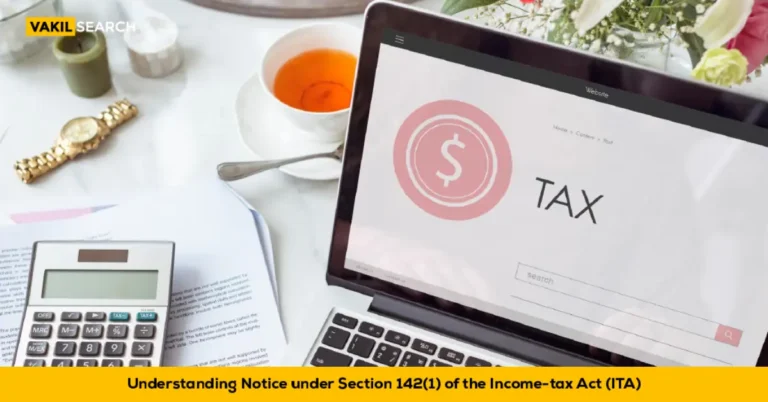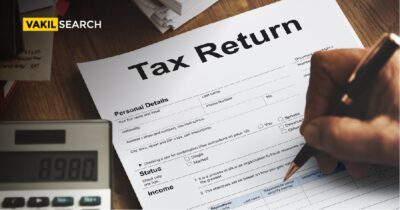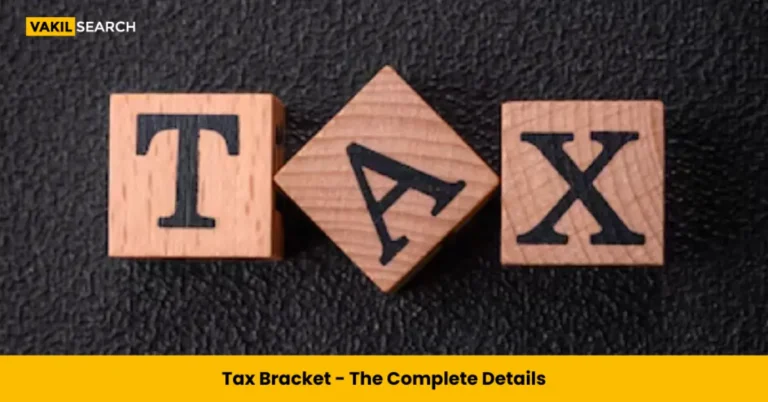Learn how to save income tax in FY 2022-23 by maximising deductions, planning investments, and choosing the right tax regime. Explore tax-saving options like ELSS, PPF, and NPS, and consult a tax expert for personalised advice.
Income tax is a compulsory contribution that individuals and businesses are required to pay to the government on their earnings. Paying taxes is an important aspect of being a responsible citizen. However, it is also important to take advantage of tax-saving measures available to reduce the amount of tax liability. In this blog, we will discuss various ways to save income tax in FY 2022-23.
Maximising Deductions and Exemptions
Claiming Standard Deductions
Standard deductions are a fixed amount that can be claimed by salaried individuals without submitting any bills or receipts. For FY 2022-23, the standard deduction limit is ₹ 50,000. This deduction can be claimed irrespective of the actual amount spent on expenses like conveyance, medical bills, etc. This deduction is applicable for both old and new tax regimes.
Utilising Section 80C
Section 80C of the Income Tax Act, 1961 allows individuals to claim deductions up to ₹ 1.5 lakh on various investments and expenses. Some of the eligible investments/expenses under this section include:
- Employee Provident Fund (EPF)
- Public Provident Fund (PPF)
- National Pension System (NPS)
- Equity Linked Savings Scheme (ELSS)
- Life Insurance Premiums
- Principal repayment on home loans
- It is important to note that the total deduction claimed under Section 80C cannot exceed ₹ 1.5 lakh.
Learn about Income Tax Return Filing in detail!
Deductions Under Section 80D
Section 80D provides deductions for premiums paid towards health insurance policies. For FY 2022-23, the deduction limit is ₹ 25,000 for individuals below 60 years of age and ₹ 50,000 for senior citizens above 60 years of age. An additional deduction of up to ₹ 25,000 can be claimed for premiums paid for parents’ health insurance policies.
Tax Benefits on Home Loans
Homeowners can claim deductions on the principal repayment and interest paid on home loans. Under Section 24 of the Income Tax Act, individuals can claim a deduction of up to ₹ 2 lakh on the interest paid on a home loan for a self-occupied property. Additionally, under Section 80C, individuals can claim a deduction of up to ₹ 1.5 lakh on the principal repayment of a home loan.
By utilising these deductions and exemptions effectively, individuals can significantly reduce their tax liability and save on income tax in FY 2022-23.
Planning Your Investments
Investing in Tax-Saving Mutual Funds
Tax-saving mutual funds, also known as Equity Linked Savings Schemes (ELSS), are a popular investment option for tax saving. Investments made in ELSS are eligible for deductions under Section 80C of the Income Tax Act, up to a limit of ₹ 1.5 lakh. These funds come with a lock-in period of 3 years, which means that the invested amount cannot be withdrawn before the completion of the lock-in period. ELSS funds are known to offer higher returns as compared to other tax-saving investments like PPF or fixed deposits.
Precision in every calculation – Trust our Online Tax Calculator for accurate financial projections.
Investing in Public Provident Fund (PPF)
Public Provident Fund (PPF) is a long-term savings scheme that offers guaranteed returns and tax benefits. Investments made in PPF are eligible for deductions under Section 80C of the Income Tax Act, up to a limit of ₹ 1.5 lakh. The interest earned on PPF investments and the maturity amount are also tax-free. The lock-in period for PPF is 15 years, which can be extended further in blocks of 5 years.
Tax Benefits on National Pension System (NPS)
National Pension System (NPS) is a retirement savings scheme that offers tax benefits to individuals. Contributions made towards NPS are eligible for deductions under Section 80C of the Income Tax Act, up to a limit of ₹ 1.5 lakh. Additionally, an additional deduction of up to ₹ 50,000 can be claimed under Section 80CCD(1B) for contributions made towards the NPS. The maturity amount received under NPS is partially tax-free.
By planning investments in tax-saving mutual funds, PPF, and NPS, individuals can maximise their tax savings and build their wealth over the long term. It is important to choose investment options based on one’s financial goals, risk appetite, and investment horizon.
Investment Options Under Section 80C
Section 80C of the Income Tax Act offers various tax-saving options for individuals and Hindu Undivided Families (HUFs) in India. You can claim deductions on investments and expenses up to Rs. 1.5 lakh in a financial year.
| Investment Option | Returns | Lock-in Period |
| 5-Year Bank Fixed Deposit | 6% to 7% | 5 years |
| Public Provident Fund (PPF) | 7% to 8% | 15 years |
| National Savings Certificate | 7% to 8% | 5 years |
| National Pension System (NPS) | 12% to 14% | Till retirement |
| Equity-Linked Savings Scheme (ELSS) Funds | 15% to 18% | 3 years |
| Unit Linked Insurance Plan (ULIP) | Varies with plan | 5 years |
| Sukanya Samriddhi Yojana (SSY) | 8.20% | N/A |
| Senior Citizen Saving Scheme (SCSS) | 8.20% | 5 years |
Park Your Money In Government Schemes
Investing in government-mandated schemes can yield high returns and offer significant tax benefits. Under Section 80C of the Income Tax Act, individuals can claim tax waivers on investments up to Rs. 1.5 lakh annually.
Tax-saving investment options include:
- Senior Citizen Savings Scheme (SCSS): Designed for senior citizens, this scheme offers attractive returns along with tax benefits.
- Sukanya Samriddhi Yojana (SSY): Aimed at securing the future of the girl child, this scheme provides high returns and tax exemptions.
- National Pension System (NPS): A retirement-focused scheme that offers tax benefits and the potential for significant returns.
- Public Provident Fund (PPF): A long-term investment option with tax-free returns and exemptions under Section 80C.
These government schemes not only help you save on taxes but also secure your financial future with reliable returns.
Buy a Health Insurance Policy
Purchasing a health insurance policy not only secures your health but also offers tax benefits. Under Section 80D of the Income Tax Act, you can claim deductions on the premiums paid for health insurance.
Section 80D Deduction Limits:
| Particular | Amount |
| Medical insurance for self and family | Rs. 25,000 (Rs. 50,000 for senior citizens) |
| Medical insurance for parents | Rs. 25,000 (Rs. 50,000 for senior citizens) |
| Preventive health checkup | Rs. 5,000 per year |
| Medical expenditure for uninsured senior citizen parents | Rs. 50,000 |
Investing in a health insurance policy not only provides financial security during medical emergencies but also helps you save on taxes. Depending on the age of the insured, you can claim significant deductions, making it a smart financial move.
Choosing the Right Tax Regime
Understanding the New Tax Regime
The new tax regime was introduced in the Union Budget 2020 with the aim of simplifying the tax structure and providing more tax-saving options to individuals. The new tax regime offers lower tax rates as compared to the old regime, but with fewer exemptions and deductions. The new tax regime is optional and taxpayers can choose to opt for it.
Comparing Old and New Tax Regime
The old tax regime offers more exemptions and deductions, but with higher tax rates. For instance, the tax rate for individuals with an annual income of up to ₹ 5 lakh is nil under the old regime, but it is 5% under the new regime. On the other hand, the new regime offers lower tax rates, but with fewer deductions and exemptions. Taxpayers need to compare the tax rates and deductions under both regimes to choose the one that suits them best.
Learn about Income Tax Calculator
Deciding which Regime to Opt For
Taxpayers need to consider various factors while deciding which tax regime to opt for. For instance, individuals with high taxable income may benefit more from the new regime, while individuals with a lot of deductions and exemptions may find the old regime more beneficial. Taxpayers also need to consider their financial goals, risk appetite, and investment horizon while choosing the right tax regime.
Wrapping Up
In conclusion, by understanding the new tax regime, comparing it with the old regime, and deciding which regime to opt for, taxpayers can save on income tax in FY 2022-23. It is important to consult a tax expert or a financial advisor before making any investment or tax-related decisions.
In addition, there are various ways to save income tax in FY 2022-23. Individuals can invest in tax-saving instruments, claim deductions on health insurance and home loan interest, take advantage of LTA and HRA exemptions, and donate to charitable organizations. It is important to plan and manage finances effectively to take advantage of these tax-saving measures. By doing so, individuals can not only save tax but also secure their financial future.
Other Tax Saving Options Beyond Section 80C
Beyond Section 80C, there are several other tax-saving options available. Here are some tax saving options for salaried 2022-23 one can utilise deductions under Section 80 to reduce your income tax liability. These options include:
- Interest paid on a home loan is deductible under Section 24, up to ₹2 lakh. Section 80EE allows an extra deduction of up to ₹50,000 on home loan interest, in addition to the Section 24 limit
- Additionally, Section 80EEA extends eligibility for an additional interest deduction of ₹1.5 lakh on the purchase of a new house under the affordable housing scheme, until 31 March 2022
- The principal portion of a home loan can be claimed under Section 80C, up to ₹1.5 lakh, while the interest portion can be claimed as a deduction from income from house property
- Claiming medical insurance premiums up to ₹50,000, with ₹25,000 for self, spouse, and children, and an additional ₹25,000 for dependent parents below 60 years. If you have senior citizen family members without health insurance, you can claim medical expenses up to ₹50,000 under Section 80D
- Contributions made to notified institutions or funds can be claimed as deductions under Section 80G
- Interest paid on education loans is eligible for deduction under Section 80E
These options provide avenues for reducing your taxable income and ultimately lowering your income tax liability.
For more legal information, visit Vakilsearch!
Frequently Asked Questions
How can I save on my taxes in 2023?
Here are some of the tax saving options for salaried 2022-23, you can explore various tax-saving strategies, it include optimising your eligibility for tax deductions and exemptions, considering investments in tax-saving instruments like the Public Provident Fund (PPF), National Savings Certificate (NSC), and Equity Linked Savings Scheme (ELSS), as well as strategically planning your finances to reduce your taxable income. However, you need to do more detailed research before making an investment. For more information you can get in touch with our tax experts.
What are the tax deductions for FY 2022 2023?
You can claim the deductions under the following sections as a part of tax saving options for salaried 2022-23: Section 80C: Deductions up to ₹1.5 lakh for investments in PPF, NSC, ELSS, and tax-saving FDs Section 80D: Deductions up to ₹25,000 for health insurance premiums, with an extra ₹25,000 for senior citizens Section 80CCD(1b): Deductions up to ₹50,000 for contributions to the National Pension System (NPS) Section 80E: Deductions up to ₹50,000 for interest on education loans Section 80G: Allows deductions up to 50% for donations to recognised charities. Section 80TTA: Permits deductions up to ₹10,000 for interest from savings accounts. For more clarified information get in touch with our experts
How can I reduce my income tax?
There are various strategies to minimise your income tax burden. These include maximising your eligibility for tax deductions and exemptions, considering investments in tax-saving schemes, strategically managing your financial portfolio to lower your taxable income, contributing to charitable causes, and capitalising on government tax rebates and credits. It's better to consult a CA online through Vakilsearch.
How can I save more than ₹1.5 lakhs tax?
If your taxable income is more than ₹1.5 lakh, you can still save more on taxes by investing in tax-saving schemes and claiming other tax deductions and exemptions. For example, you can invest in NPS, which offers a tax deduction of up to ₹50,000 in addition to the ₹1.5 lakh deduction under Section 80C. You can also claim tax deductions for health insurance premiums, interest paid on education loans, and charitable donations. Note: This is not an advice to invest in NPS. Make sure to do more research on the topic before investment.
How can I save 100% income tax?
It is not possible to save 100% income tax in India. However, you can reduce your tax liability to zero by claiming all of the tax deductions and exemptions that you are eligible for and by making charitable donations.
Can I claim 80C without proof?
You can claim 80C deductions without proof for certain investments, such as PPF and NPS. However, for other investments, such as ELSS and tax-saving FDs, you will need to provide proof of investment.
How to pay 0 tax on 12 lakh salary?
If your salary is ₹12 lakh, you can pay zero tax by investing in tax-saving schemes and claiming other tax deductions and exemptions. For example, you can invest ₹1.5 lakh in PPF, ₹50,000 in NPS, and ₹25,000 in health insurance premiums. This will bring your total taxable income down to ₹9 lakh. You can then claim a tax deduction of ₹9 lakh under the new tax regime, which will reduce your tax liability to zero. This is just an insight, for more tax saving options for salaried 2022-23, it's highly recommended to get in touch with Vakilsearch for more tailor made inputs.
Which tax scheme is better?
The new tax regime offers lower tax rates than the old tax regime, but it also comes with fewer tax deductions and exemptions. Therefore, the best tax scheme for you will depend on your individual circumstances. For more clarity, book a slot with our CA and get tailor made insights.
Which FD is best for tax saving?
Tax-saving FDs are wonderful tax saving options for salaried 2022-23, some of them are Axis Bank Tax Saver FD, HDFC Bank Tax Saver FD, ICICI Bank Tax Saver FD, SBI Tax Saver FD, Kotak Mahindra Bank Tax Saver FD. Do your due research before investing. Get in touch with our experts for more reasons.
Which are the deductions applicable in the new tax regime?
In the new tax regime, most deductions and exemptions available under the old regime are not applicable. However, the new regime offers lower tax rates across different income slabs. Specific deductions, like those under Section 80C or 80D, cannot be claimed if you opt for the new tax regime.
How to pay 0 tax on 20 lakh salary?
To pay zero tax on a salary of Rs. 20 lakh, maximise all available deductions and exemptions under the old tax regime. This includes investments in Section 80C, medical insurance premiums under Section 80D, housing loan interest under Section 24(b), and more. Effective tax planning with legitimate deductions can significantly reduce taxable income.
Is NPS tax free?
The National Pension System (NPS) offers tax benefits under Sections 80C and 80CCD(1B). Contributions to NPS can be claimed up to Rs. 1.5 lakh under Section 80C and an additional Rs. 50,000 under Section 80CCD(1B). While NPS investments enjoy these tax benefits, withdrawals at retirement are partially tax-free.
What is the new income tax rule?
The new income tax rule, introduced in the Budget 2020, offers taxpayers a simplified tax structure with reduced tax rates but fewer deductions and exemptions. Taxpayers can choose between the old regime with higher tax rates and more deductions or the new regime with lower rates and minimal deductions.
Who can claim HRA exemption?
House Rent Allowance (HRA) exemption can be claimed by salaried individuals who receive HRA as part of their salary and live in rented accommodation. The exemption amount is calculated based on the actual HRA received, rent paid, and salary, subject to specific conditions under Section 10(13A) of the Income Tax Act.
Read more,










